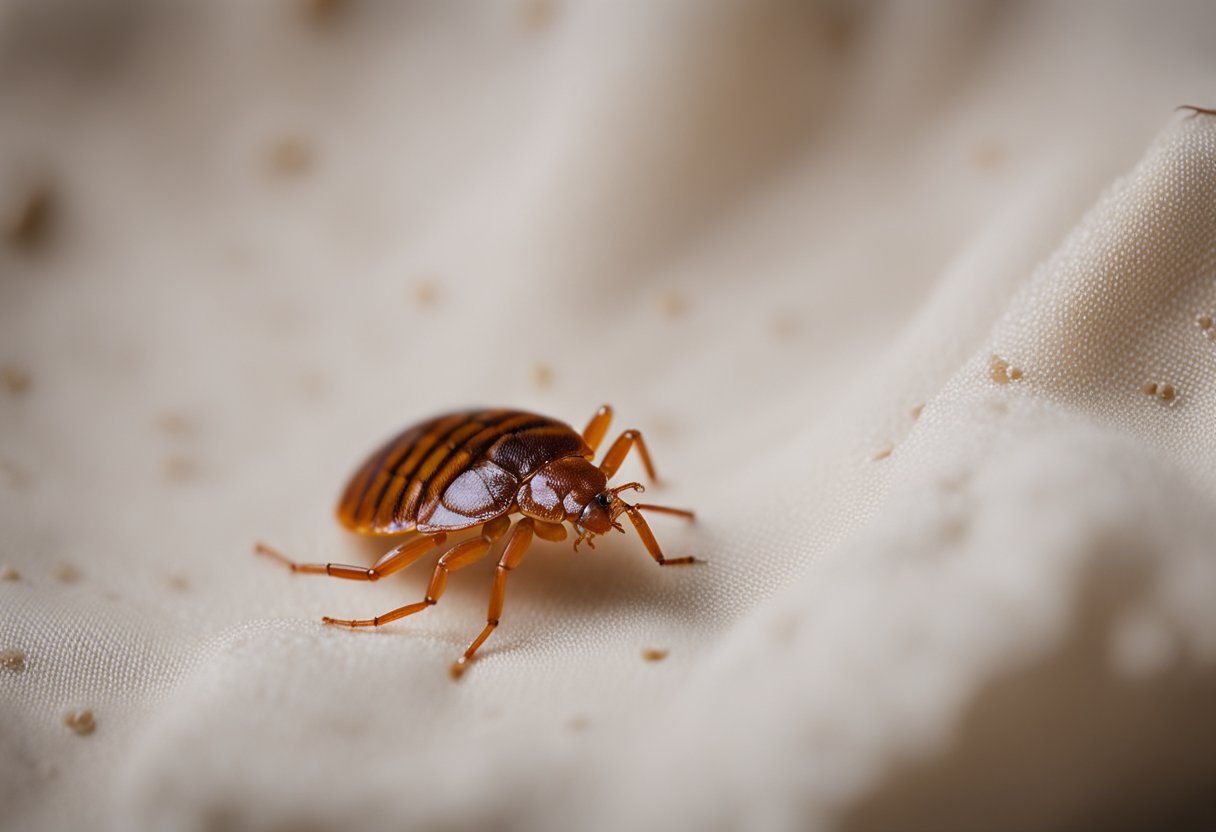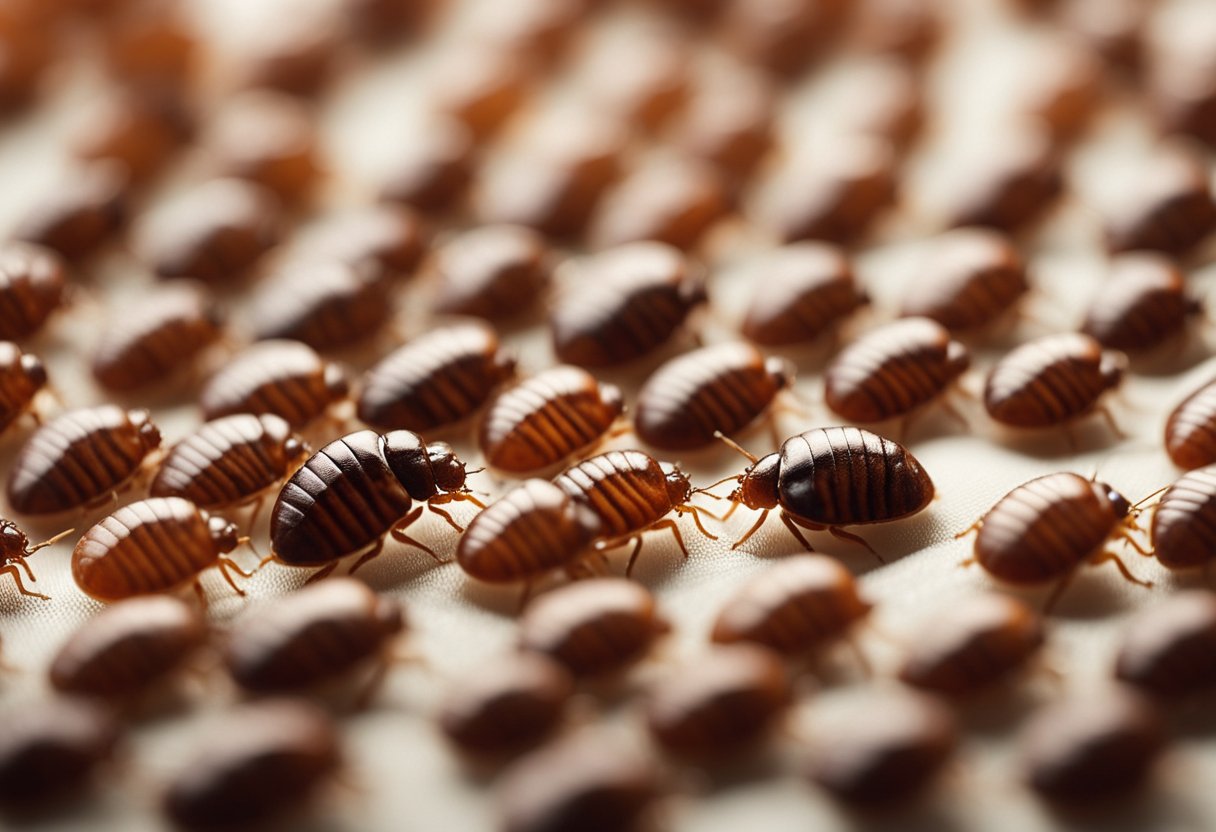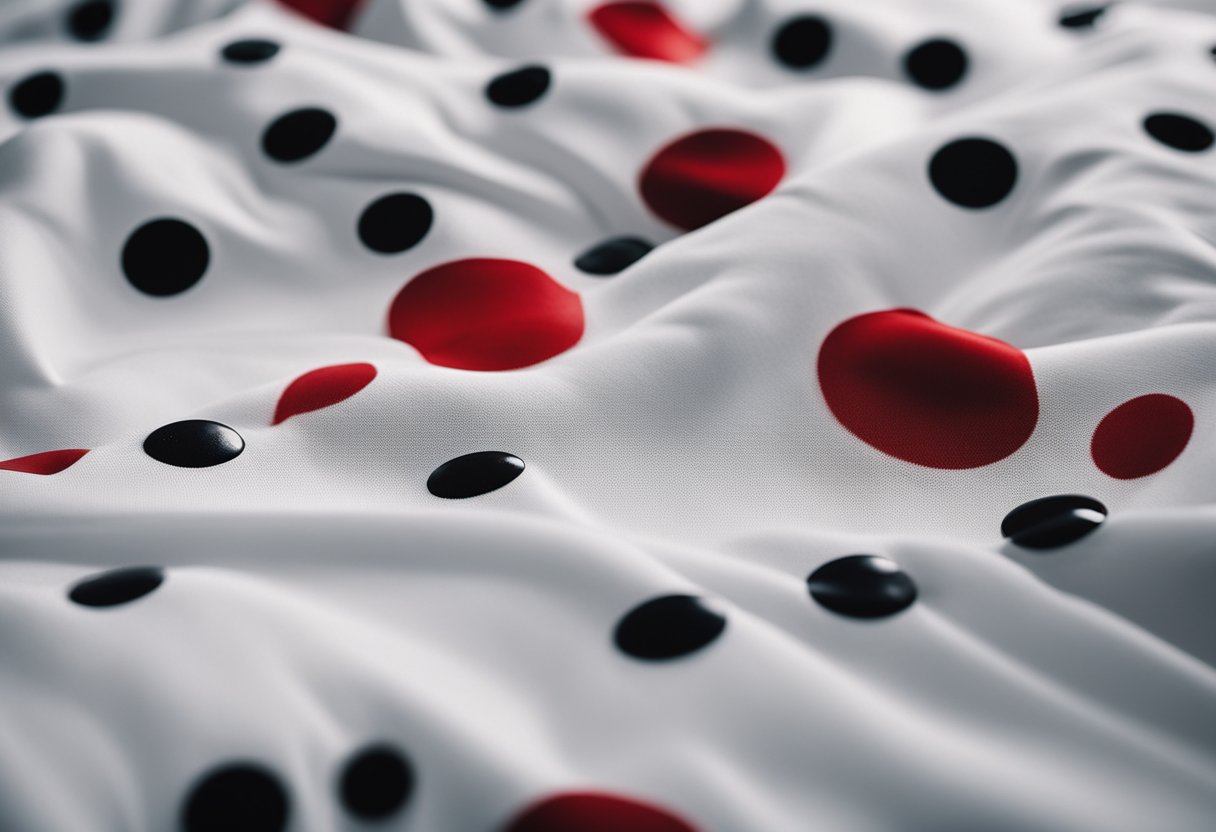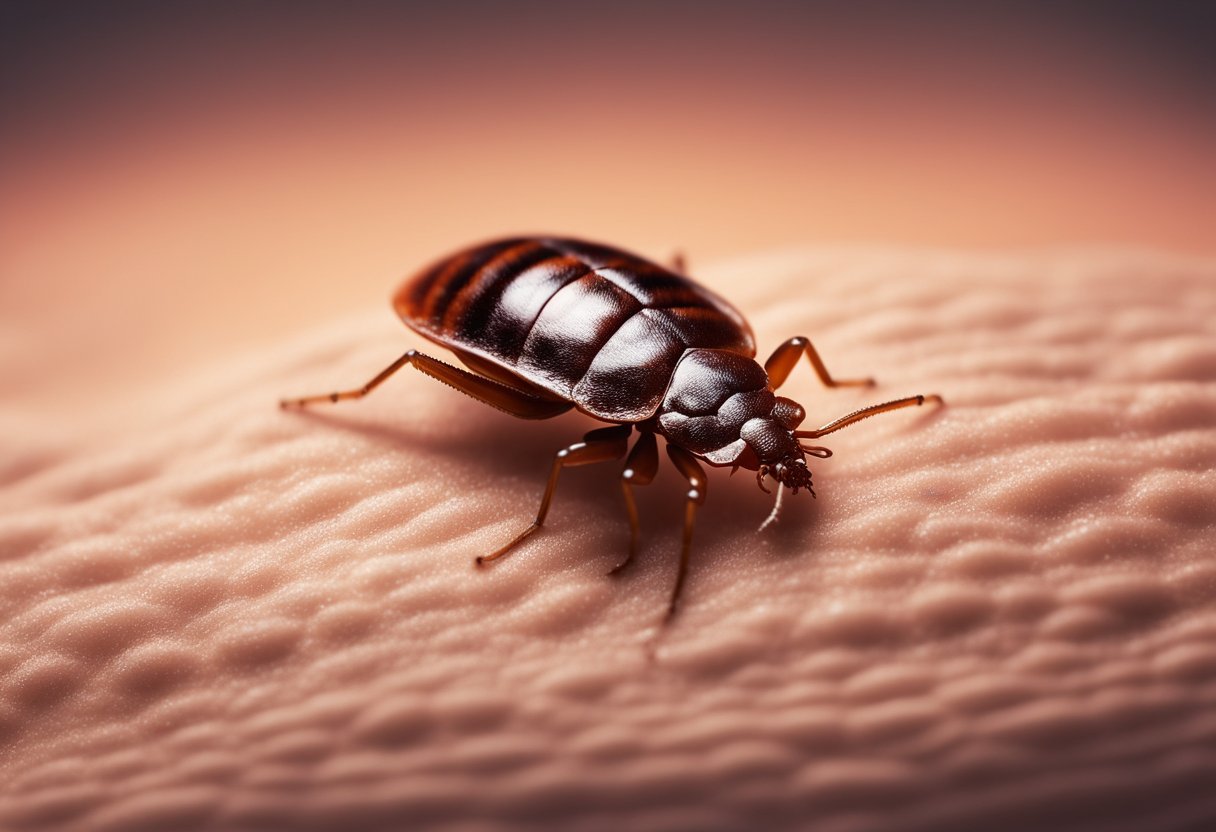Bed bugs are small, reddish-brown insects that feed on human blood. While they are not known to transmit diseases, they can cause itchy bites and are a nuisance to deal with. Unfortunately, bed bug infestations are becoming increasingly common, and it can be difficult to know if you have them. This article will provide some tips on how to identify the signs of a bed bug infestation.

One of the most obvious signs of a bed bug infestation is waking up with unexplained bites on your skin. Bed bug bites are usually arranged in a line or cluster and are often itchy. However, not everyone reacts to bed bug bites, so you may not even notice them. Another sign to look out for is blood spots on your sheets or mattress, which are left behind when a bed bug is crushed after feeding. You may also notice tiny, rust-colored stains on your sheets or mattress, which are bed bug fecal matter.
If you suspect that you have a bed bug infestation, it’s important to take action as soon as possible. Bed bugs can reproduce quickly, and a small infestation can quickly turn into a large one if left untreated. In the next section, we will discuss some steps you can take to confirm a bed bug infestation and get rid of these pesky insects.
Understanding Bed Bugs

Bed bugs are tiny, reddish-brown insects that feed on the blood of humans and animals. They are typically flat and oval-shaped, which allows them to hide in tight spaces such as cracks, crevices, and seams of mattresses or furniture. Bed bugs can vary in size, ranging from the size of a poppy seed to the size of an apple seed.
These pests are most active at night and can leave behind itchy, red bites on the skin. They are also known for leaving behind small, dark spots on bedding or furniture, which are actually their droppings. Bed bugs also lay small, white eggs that are about the size of a pinhead.
Bed bugs go through several stages of development before reaching adulthood. The first stage is the egg stage, followed by five nymph stages. During each nymph stage, the bed bug molts its skin and becomes larger. Once a bed bug reaches adulthood, it can live for several months without feeding.
It’s important to note that bed bugs do not transmit diseases, but their bites can cause discomfort and itching. If you suspect that you have bed bugs, it’s important to take action to get rid of them as soon as possible.
Related Posts:
Signs of a Bed Bug Infestation

Bed bugs are small, reddish-brown insects that feed on human blood. They are nocturnal and prefer to come out at night to feed on their host, usually humans. It can be difficult to detect bed bugs because they are so small and can hide in tiny crevices and cracks. However, there are a few signs that can indicate a bed bug infestation.
One of the most obvious signs of a bed bug infestation is the presence of live bed bugs. These insects are about the size of an apple seed and can be seen crawling on bedding, mattresses, and other surfaces. They are most active at night and can be difficult to spot during the day.
Another sign of a bed bug infestation is the presence of dark spots or rusty or reddish stains on bedding, mattresses, and other surfaces. These stains are caused by bed bug excrement and blood that has been excreted after feeding. The stains can be difficult to remove and may require professional cleaning.
Bed bugs also molt their skins as they grow. These skins can be found in the seams of mattresses, along the edges of bedding, and in other areas where bed bugs are likely to hide. The skins are translucent and can be difficult to see, but they can be a sign of a bed bug infestation.
Cracks and crevices in walls, floors, and furniture can also be a hiding place for bed bugs. They can also hide in the seams of mattresses and box springs, and in the frames of beds and other furniture. Bed bugs can be difficult to detect in these areas, but they can be a sign of a bed bug infestation.
If you suspect that you have a bed bug infestation, it is important to take action as soon as possible. Bed bugs can quickly spread throughout a home and can be difficult to eliminate without professional help.
Related Posts:
Bed Bug Bites

One of the most common signs of a bed bug infestation is the appearance of bed bug bites on your skin. Bed bug bites are usually painless at first, and you may not even notice them until hours or days after they occur. The bites typically appear on areas of the skin that are exposed while you sleep, such as your face, neck, arms, and hands.
Bed bug bites are often characterized by red, itchy bumps on the skin that may be arranged in a line or cluster. They can also appear as slightly discolored, pin-like raised red dots that are about 0.2 cm to 0.5 cm in diameter. In some cases, bed bug bites may cause hives or wheals that are significantly redder than the surrounding skin.
It’s important to note that bed bug bites can be easily mistaken for other skin conditions or insect bites, so it is essential to correctly identify them. If you suspect that you have bed bug bites, it’s a good idea to inspect your sleeping area for other signs of bed bugs, such as blood stains on your sheets or mattress, or the presence of bed bug excrement.
If you are experiencing an allergic reaction to bed bug bites, you may develop more severe symptoms, such as swelling, blistering, and difficulty breathing. In rare cases, bed bug bites can lead to anaphylaxis, a life-threatening allergic reaction.
To relieve the symptoms of bed bug bites, you can use over-the-counter anti-itch creams or take antihistamines. However, if you are experiencing a severe allergic reaction, seek medical attention immediately.
Related Posts:
Bed Bug Habitats
Bed bugs are small, flat, oval-shaped insects that are reddish-brown in color. They are often found in places where people sleep or rest for extended periods, such as mattresses, sheets, furniture, couches, and upholstered furniture. They can also be found in other areas, such as headboards, box springs, wallpaper, carpet, and even electrical outlets.
Bed bugs are not limited to homes and can be found in many public places such as hotels, buses, and trains. They are attracted to warmth, carbon dioxide, and human blood, making places where people sleep or rest ideal habitats for them.
In homes, bed bugs are most commonly found in bedrooms, particularly in or around the bed. They often hide in cracks and crevices in the bed frame, headboard, and mattress. They can also hide in baseboards, electrical outlets, and behind wallpaper.
In hotels, bed bugs can be found in any room, regardless of its cleanliness or level of luxury. They can be found in mattresses, box springs, headboards, and upholstered furniture. It is important to check the room for signs of bed bugs before settling in.
In public transportation, bed bugs can be found in seats and on the floor. They can also be found in luggage compartments and on luggage that has been stored there. It is important to check luggage and clothing for signs of bed bugs after traveling.
It is important to note that bed bugs do not only live in dirty environments. They can be found in any environment, regardless of its cleanliness. Regular cleaning and inspection of sleeping areas can help prevent bed bug infestations.
Preventing Bed Bug Infestations
Preventing bed bug infestations is the best way to avoid the stress, expense, and discomfort they cause. Here are some tips to help you avoid an infestation:
-
Inspect second-hand furniture: Before bringing any used furniture into your home, inspect it thoroughly for signs of bed bugs. Focus on the seams and crevices of the furniture, as these are the most likely places for bed bugs to hide.
-
Encase your mattress and box spring: Bed bugs are often found in mattresses and box springs. Encasing them in special covers can help prevent bed bugs from getting in or out.
-
Be careful when traveling: Bed bugs are often found in hotels and other lodging. When traveling, inspect the room for signs of bed bugs before unpacking. Keep your luggage off the floor and bed, and inspect it before bringing it home.
-
Wash and dry clothing on high heat: Bed bugs can hide in clothing, so it’s important to wash and dry all clothing on high heat after traveling or after being in contact with someone who has bed bugs.
-
Seal cracks and crevices: Bed bugs can hide in cracks and crevices in walls, floors, and furniture. Sealing these areas can help prevent bed bugs from getting in or out.
-
Reduce clutter: Clutter provides bed bugs with more places to hide, so reducing clutter in your home can help prevent bed bug infestations.
-
Inspect electrical outlets and appliances: Bed bugs can also hide in electrical outlets and appliances. Inspect these areas regularly and seal any cracks or crevices.
-
Remove loose wallpaper: Bed bugs can hide behind loose wallpaper, so it’s important to remove any loose wallpaper in your home.
By following these tips, you can help prevent bed bug infestations and avoid the stress and expense they cause.
Treating Bed Bug Bites
If you have been bitten by bed bugs, there are a few things you can do to alleviate the symptoms. Bed bug bites are usually itchy and may appear as inflamed spots with a darker spot in the middle. They are often arranged in a rough line or in a cluster and located on the face, neck, arms, and hands. Some people have no reaction to bed bug bites, while others may experience an allergic reaction or develop a skin condition.
To treat bed bug bites, start by washing the affected area with soap and water. This will help prevent a skin infection and reduce itchiness. If the bites itch, apply a corticosteroid cream to the bites. Over-the-counter antihistamines can also be used to relieve the itching. If the symptoms persist or worsen, seek medical attention.
It is important to note that while treating the symptoms of bed bug bites can provide relief, it does not address the root cause of the problem. If you suspect that you have bed bugs, it is important to identify and eliminate the infestation. This may involve hiring a professional exterminator or using do-it-yourself methods such as vacuuming, steam cleaning, and applying insecticides.
In addition to treating the bites and eliminating the infestation, it is important to take steps to prevent future infestations. This may include inspecting secondhand furniture before bringing it into your home, using mattress and box spring covers, and sealing cracks and crevices in your home to reduce hiding places for bed bugs.
Eliminating Bed Bugs
If you have a bed bug infestation, it’s important to act quickly to get rid of them. Treatment options include using bed bug traps, sprays, and bombs, which can be effective in reducing the number of bed bugs in your home. However, it’s important to note that these methods may not completely eliminate the infestation and may need to be repeated over several months.
One of the most important steps in eliminating bed bugs is to focus on the areas where they are most likely to hide, such as in your mattress, bed frame, and furniture. You should inspect these areas regularly for signs of bed bugs, such as blood stains, fecal matter, and shed skins.
In addition to using treatment methods, it’s important to take preventative measures to avoid future infestations. This includes regularly washing your bedding, vacuuming your home, and sealing any cracks or crevices where bed bugs could enter.
Remember, eliminating a bed bug infestation can be a lengthy and difficult process, but with persistence and the right methods, it is possible to get rid of them for good.
Related Posts:
- Best Bed Bug Traps: A Comprehensive Guide for 2023
- Best Bed Bug Spray 2023: Effective Solutions for Pesky Pests
- Best Bed Bug Bombs: Top Picks for Effective Eradication in 2023
- What Kills Bed Bugs: Effective Solutions for Eradication
Frequently Asked Questions
What are the first signs of a bed bug infestation?
The first sign of a bed bug infestation is usually the appearance of small, red, and itchy bites on the skin. These bites are often found in a line or cluster and are commonly located on the arms, legs, and other exposed areas of the body. Other signs of a bed bug infestation include bloodstains on sheets and pillowcases, dark spots on the mattress or furniture, and a musty odor.
Can you see bed bugs with the naked eye?
Yes, bed bugs are visible to the naked eye, but they are small and can be difficult to spot. Adult bed bugs are about the size of an apple seed and have a flat, oval-shaped body. They are usually reddish-brown in color, but may appear lighter or darker depending on when they last fed.
How do you check if a bed has bed bugs?
To check if a bed has bed bugs, start by removing all bedding and inspecting the mattress and box spring for signs of bed bugs. Look for bloodstains, dark spots, and live or dead bed bugs. Check the seams, tufts, and folds of the mattress, as well as any cracks or crevices in the bed frame or headboard. You can also use a flashlight to help you see more clearly.
How long does it take to know if you have bed bugs?
It can take several weeks or even months to know if you have bed bugs. Bed bugs are nocturnal and can be difficult to spot, so it may take some time before you see any signs of an infestation. If you suspect that you have bed bugs, it’s important to take action as soon as possible to prevent the infestation from spreading.
What do bed bugs look like?
Bed bugs are small, flat, and oval-shaped insects that are about the size of an apple seed. They are reddish-brown in color, but may appear lighter or darker depending on when they last fed. Bed bugs have six legs, two antennae, and are wingless.
Are bed bugs dangerous?
While bed bugs are not known to transmit disease, their bites can be itchy and uncomfortable. In some cases, a person may develop an allergic reaction or secondary infection from scratching the bites. Additionally, bed bug infestations can be difficult and expensive to treat, and can cause stress and anxiety for those affected.
